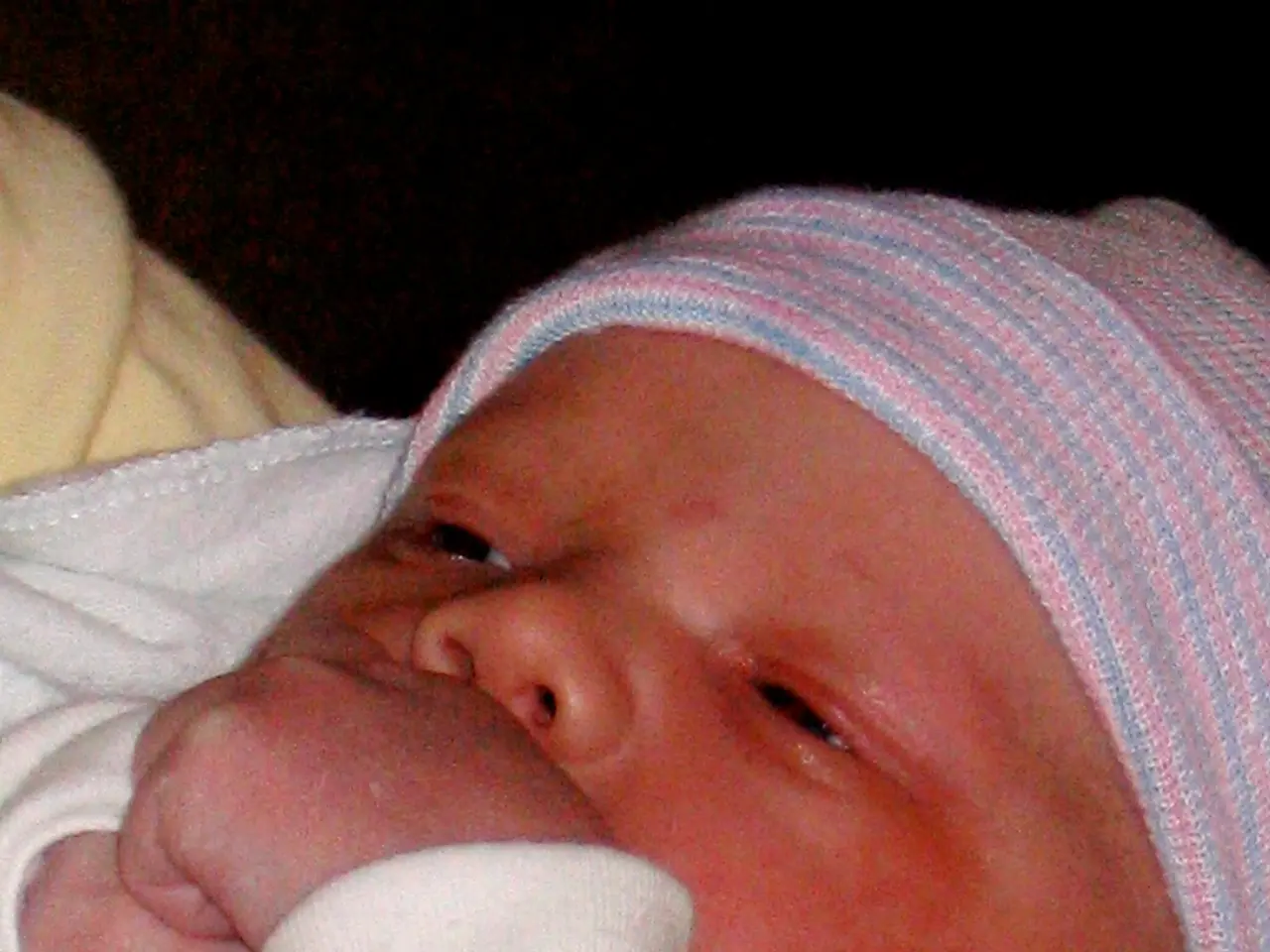"Infant Skin Irritation: Understanding Causes and Recognizing When Professional Medical Advice is Needed"
Babies can experience various types of rashes, which can be a source of concern for parents and caregivers. Understanding the causes, symptoms, and appropriate treatments for these rashes is essential to ensure the baby's health and wellbeing.
One of the most common rashes in babies is diaper dermatitis, also known as diaper rash. This condition is caused by prolonged contact with urine and stool, especially when diapers are not changed frequently or if the baby has loose stools or diarrhea. Tight diapers causing friction and secondary infections with bacteria or yeast (Candida) can also contribute to diaper dermatitis.
Seborrheic dermatitis is another frequent rash in infants, affecting those under three months old. Caused by hyperactive oil glands stimulated by maternal hormones after birth, seborrheic dermatitis leads to redness, inflammation, and scaling, commonly on the scalp, face, or diaper area. Most infants outgrow it by six to twelve months.
Neonatal acne occurs a few weeks to months after birth, caused by maternal hormones stimulating sebaceous glands, resulting in pimples on the baby’s face. Heat rash, common in hot, humid climates, appears as tiny red or clear bumps due to blocked sweat ducts, often on the neck, chest, or diaper area.
Viral rashes occur during or after viral infections, presenting as flat pink or red spots that may not itch. Examples include roseola, hand-foot-and-mouth disease (HFMD), and other viral exanthems. Eczema, a chronic itchy skin condition, appears commonly on the face, behind knees or elbows, and is worsened by triggers such as heat, allergens, or irritants. Babies with a family history of eczema, asthma, or allergic rhinitis are more prone to the condition.
Treatment for rashes in babies varies based on the underlying condition. Diaper dermatitis can be managed effectively with frequent diaper changes, keeping the area clean and dry, and using barrier creams such as zinc oxide. Severe cases of seborrheic dermatitis may require topical treatment prescribed by a doctor, while eczema requires regular moisturizing, avoiding known irritants/allergens, and sometimes topical steroids or prescribed medications to manage flare-ups.
Preventive measures include maintaining good hygiene, frequent diaper changes, gentle skin care with mild soaps, avoiding prolonged exposure to wetness or irritants, and protecting the baby from overheating. Caregivers can reduce a baby's exposure to allergens and triggers to eczema and other rashes by taking preventive measures, although this may not prevent all rashes.
In summary, common baby rashes are often related to irritants like moisture and heat, infections (viral or fungal), and underlying skin conditions like eczema. Proper hygiene, skin care, and timely medical consultation for persistent or severe rashes are key for effective management. If anyone is unsure about the cause of the rash or the appropriate treatment, they should talk with a doctor.
- Infantile diaper rash, a common issue, occurs due to prolonged contact with urine and stool.
- Frequent diaper changes, maintaining cleanliness, and avoiding tight diapers can help prevent diaper dermatitis.
- Seborrheic dermatitis, seen in infants under three months, results from hyperactive oil glands stimulated by maternal hormones.
- Symptoms of seborrheic dermatitis include redness, inflammation, and scaling on the scalp, face, or diaper area.
- Neonatal acne, caused by maternal hormones, leads to pimples on a baby's face.
- Heat rash, common in humid climates, appears as tiny red or clear bumps on the neck, chest, or diaper area.
- Viral rashes occur during or after viral infections, such as roseola, HFMD, and other viral exanthems.
- Eczema, a chronic itchy skin condition, may affect a baby's face, behind knees, or elbows.
- Babies with a family history of eczema, asthma, or allergic rhinitis are more prone to eczema.
- Diaper dermatitis can be treated with frequent diaper changes, keeping the area clean and dry, and using barrier creams like zinc oxide.
- Severe cases of seborrheic dermatitis might require prescription topical treatments.
- Eczema requires regular moisturizing, avoiding known irritants/allergens, and occasionally topical steroids or prescribed medications.
- Preventive measures for rashes include good hygiene, regular diaper changes, mild soap, and avoiding prolonged wetness or irritants.
- To protect the baby from allergens and eczema triggers, caregivers can take preventive measures.
- HIV and certain medications, such as Prep, can have potential effects on skin health and may increase the risk of rashes.
- Psoriatic, atopic, ulcerative colitis, ankylosing spondylitis, bipolar disorders, and other entities may also present skin-related symptoms, as per science.
- In some cases, rashes might be indicative of underlying health issues, such as diabetes, HST (herpes simplex type), chickenpox, or depression, and require professional medical consultation.




